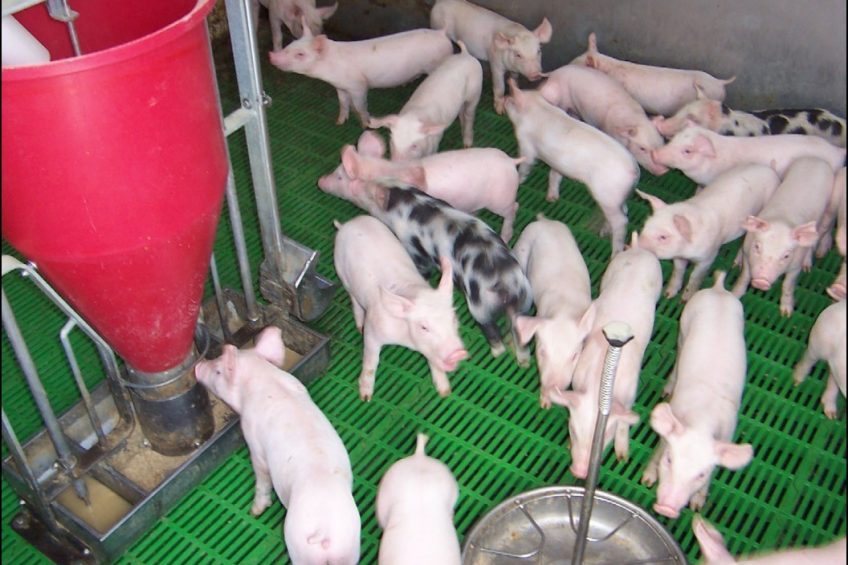Ban on therapeutic use of zinc oxide – it’s decision time

Soon the Committee for Veterinary Medicinal Products (CVMP) in the European Union will announce its final opinion on the future use of zinc oxide. Health expert David Burch doesn’t see much good coming from a ban, and calls for a rational decision.
In December 2016, the Committee for Veterinary Medicinal Products (CVMP) in the EU announced their opinion that zinc oxide marketing authorisations should be withdrawn, primarily due to environmental risk concerns. This decision has been re-examined and it is anticipated that a final decision will be made at their meeting this March.
If the decision is reversed, there are likely to be a number of restrictions placed on the high level use of zinc oxide at 3,100 ppm in feed for the prevention of post-weaning enteritis or diarrhoea.
In some countries, the use of ZnO is longer
It is meant to be used for 14 days and it is clear that in some countries it is used for longer. Its use, although it is not an antibiotic, appears to stabilise the gut flora, increase the diversity of Escherichia coli clones and prevent adhesion of enterotoxigenic E. coli (ETECs), might be required to be monitored alongside antibiotics to make sure it is not being ‘overused’.

Find all there is to know about pig health using Pig Progress ’ unique Pig Health Tool
Concentrations in soil and water should be assessed in more member states to evaluate the situation, but using a standardised protocol, which has already been developed by the EU authorities.
Not complying with standard procedures
The Danish data that was used in the original assessment has been criticised as not complying with standard procedures by the International Zinc Association, based in Brussels and this has led to overestimations of the potential risks.
Another cause for concern was that methicillin-resistant Staphylococcus aureus (MRSA) commonly carry zinc resistance genes. It does not select for methicillin resistance that is due to antibiotic use but might increase the number of MRSA in an infected herd by co-selection.
There is some debate over the extent, but in one Danish trial in weaner pigs it did appear to increase the nasal carriage of MRSA but tetracyclines increased the number several times more in relative terms and then carriage declined in both groups.
Restriction in MRSA infected farms
There could be a restriction on the use of zinc oxide in MRSA infected farms, there is a precedent with some other antibiotic products. This could substantially decrease the use of the product, where MRSA is considered a major problem.
There is some confusion over the use of zinc oxide actually causing the increase in the incidence of MRSA in pig herds on a national basis and this is unfounded.
No problems with ZnO in Great Britain
Britain has used zinc oxide for at least 25 years and has not had a major problem. The Netherlands has not used therapeutic zinc oxide but its herds are commonly infected. It is primarily associated with the spread of infection by carrier pigs.
If the CVMP decision is not reversed and the European Commission endorses it, the product could be removed quickly from the market and cause much chaos amongst pig producers. In Denmark it was estimated that 32 million piglet doses were used, i.e. 100% of weaners were being treated.
Close to 90% of piglets treated
In the UK and a number of EU countries it is thought likely to be close to 90% of piglets. A small UK review showed that removal of zinc oxide resulted in an increase of 3% in mortality, 30% of the pigs developed diarrhoea and there was a 20% drop in growth rate. My own work, reviewing 13 studies, showed an average 25% increase in growth performance when zinc oxide was used as well as a reduction on diarrhoea and antibiotic treatments.
Removal also caused farmers to start using antibiotics again. This would be disastrous in the short term; a 1% increase in mortality would represent a loss to the EU pork industry of €110 million so equal to €330 million. A drop of 1 kg of bodyweight would cost €250 million. Due to the gut damage and the slowing down in growth this could represent a 3 kg loss by slaughter time so could be €750 million, so a total cost of €1,080 million/year.
Trying to reduce the impact of weaning stress
It would also lead to the use of other products or methods of trying to reduce the impact of weaning stress on piglets. One method suggested was to increase weaning age by 2 weeks to 6 weeks. The increased accommodation/housing costs for farrowing sows would be €2.7 billion. The reduction in sow productivity from having fewer litters/year (approximately 15%) was valued at €935 million.


Vaccination against ETEC might cost €250-275 million and then there is all the additional cost of labour to administer the vaccine. Other additives have been mentioned such as acids and probiotics etc but in a paper by Postma and others from 2015, 111 pig health professionals from Belgium, Denmark, France, Germany, Sweden and Switzerland rated these at 16 and 19 out of 19 for efficacy, feasibility and return on investment in comparison with zinc which was at 3 overall. So they offer limited options and hence the likelihood to return to antibiotic use to control the problem.
Delivering a rational decision
The European Medicines Agency and the European Commission have some major decisions to make in the coming months, I can only advise pig producers and other associated pig professionals to make their national and EU representative bodies fully aware about your concerns so that a rational decision or future programme is delivered.











